Don't let chord inversions bamboozle you. It's simply the case of shuffling the notes around
Inversions are essential for jazz players, virtuoso cats such as Martin Tyler, but they are super-useful for any player looking for a fresh chord voicing. Let's take a look and demystify them with 5 ways you can play a Bmaj7
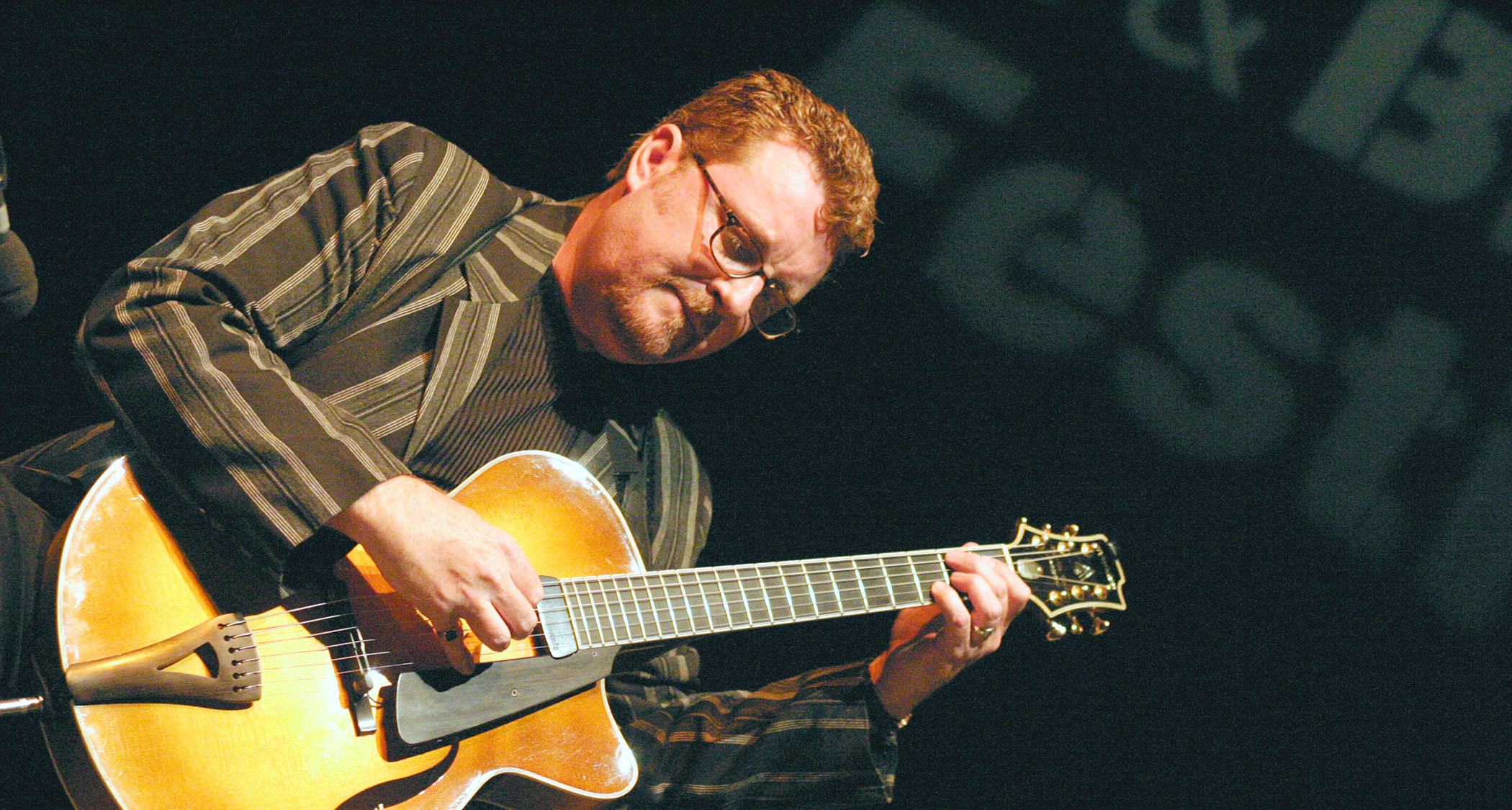
We get different voicings of a chord when we shuffle the order of the notes around. Though we still have the same chord harmonically speaking, it will have a slightly different character.
We can also arrange to have the Root, 3rd, 5th, 7th (or any other extension) at the top or bottom to facilitate chord melody arrangements or Bach-style moving basslines. In the classical world, this practice would usually be called ‘inversions’ of a chord.
Briefly, a major or minor chord with the 3rd shifted to the bottom (such as D/F#) is a first inversion. Move the 5th to the bottom (D/A, for example) and we have a second inversion.
If we were to take a dominant 7th chord and move the 7th to the bottom (D/C, for example), we’d have a third inversion. In the jazz/pop/rock world, we normally talk in terms of voicings or slash chords, but it’s useful to understand the various terminologies.
In the meantime, enjoy the versions of Bmaj7 in the examples and I hope you feel inspired to apply this approach to other chords.
Example 1
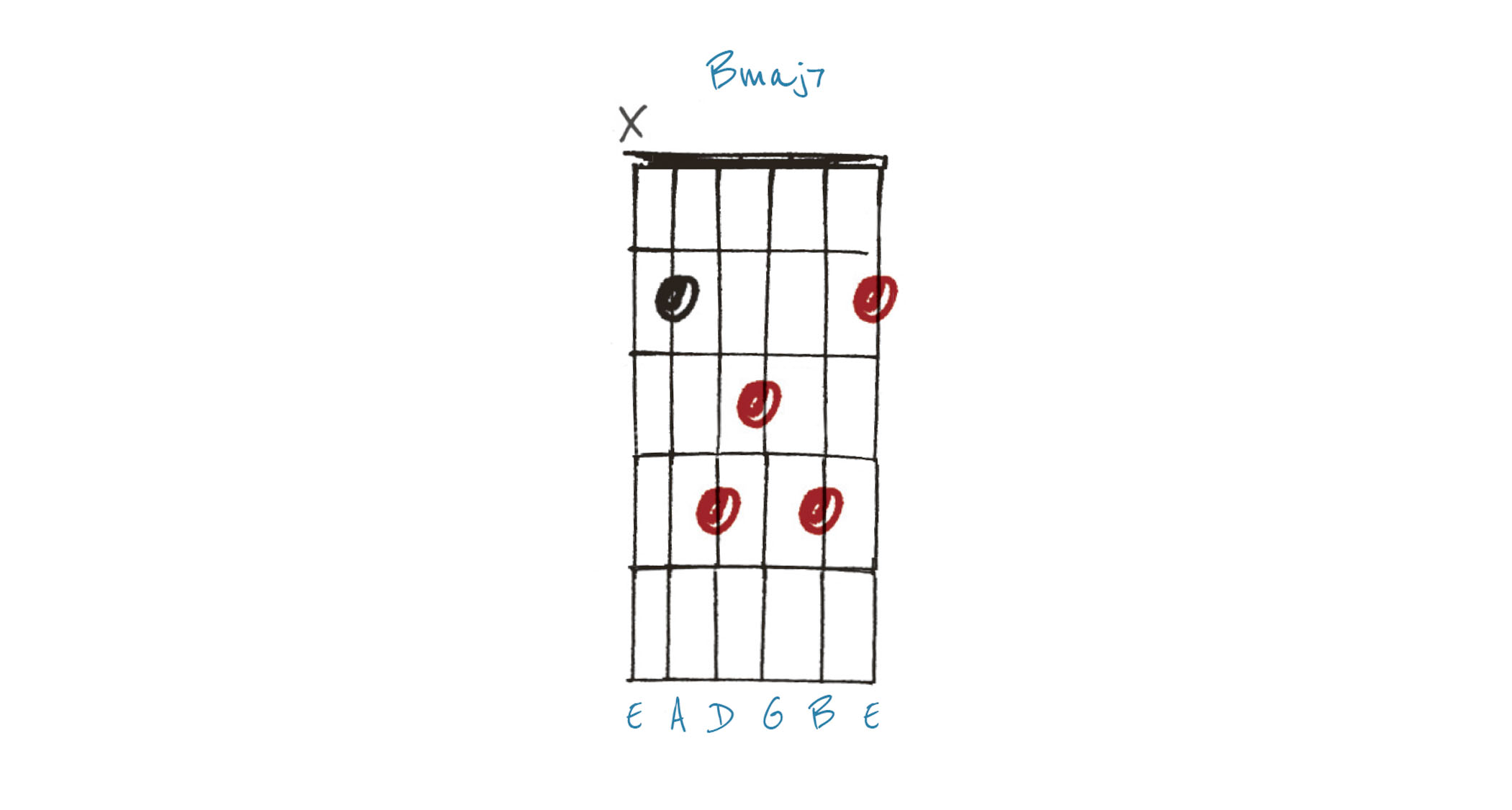
Based on the CAGED shape of A major, this movable Bmaj7 shape is one of the most popular maj7 voicings, as seen in many chord books.
We have the Root (B) on the fifth string, then the 5th (F#), maj7th (A#), 3rd (D#) and another 5th (F#) in that order as you strum across the strings. The duplicated 5th is optional, but it makes a nice top note.
Example 2
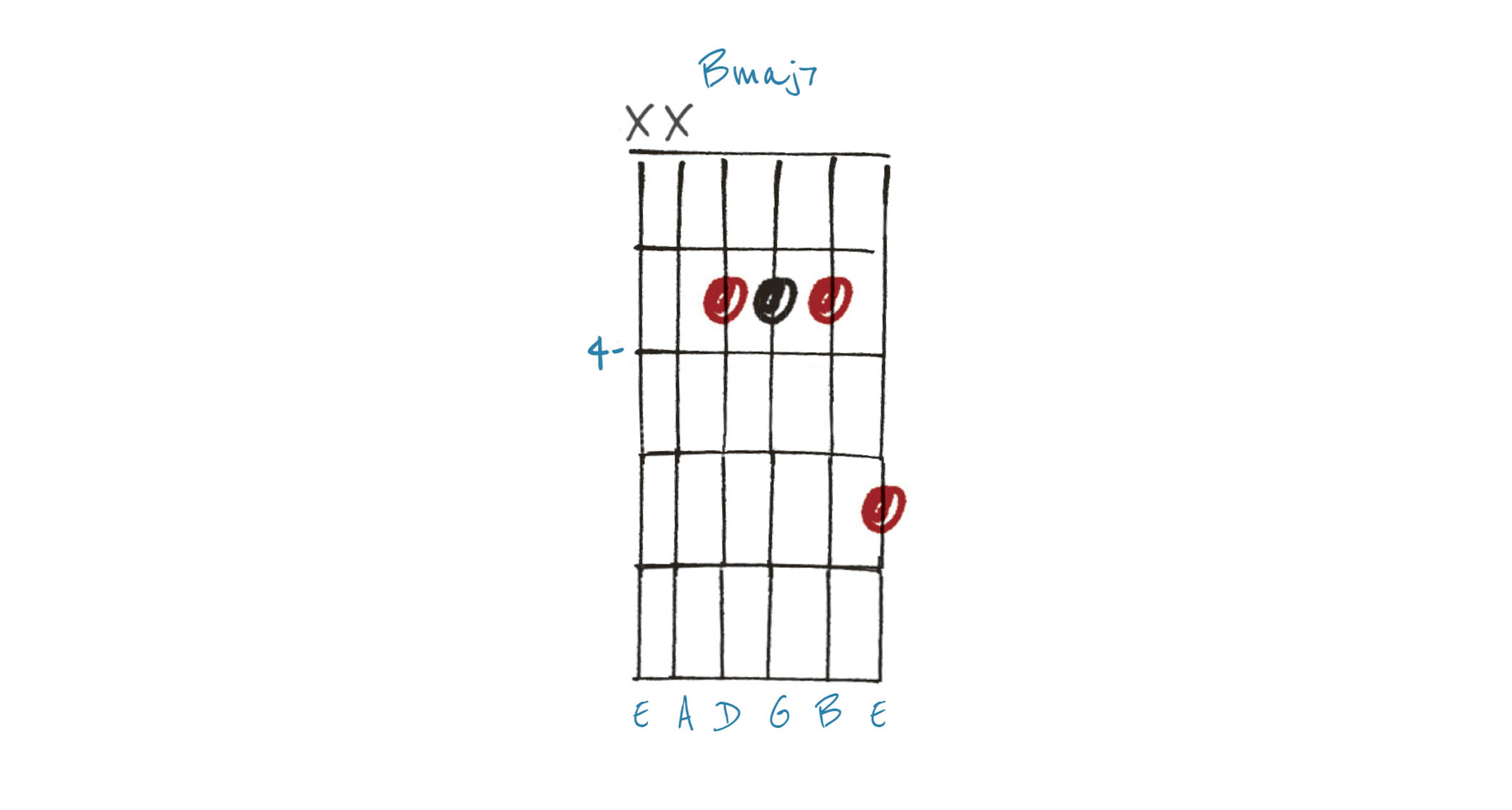
This voicing of Bmaj7 has the 5th (F#) on the bottom, so could technically be called a second inversion.
The rest of the B major triad is also here at the 4th fret, so we have the full set: F#-B-D#, in that order. The maj7th (A#) appears on the first string, which is a nice way to accentuate what is unique about this chord.
Example 3
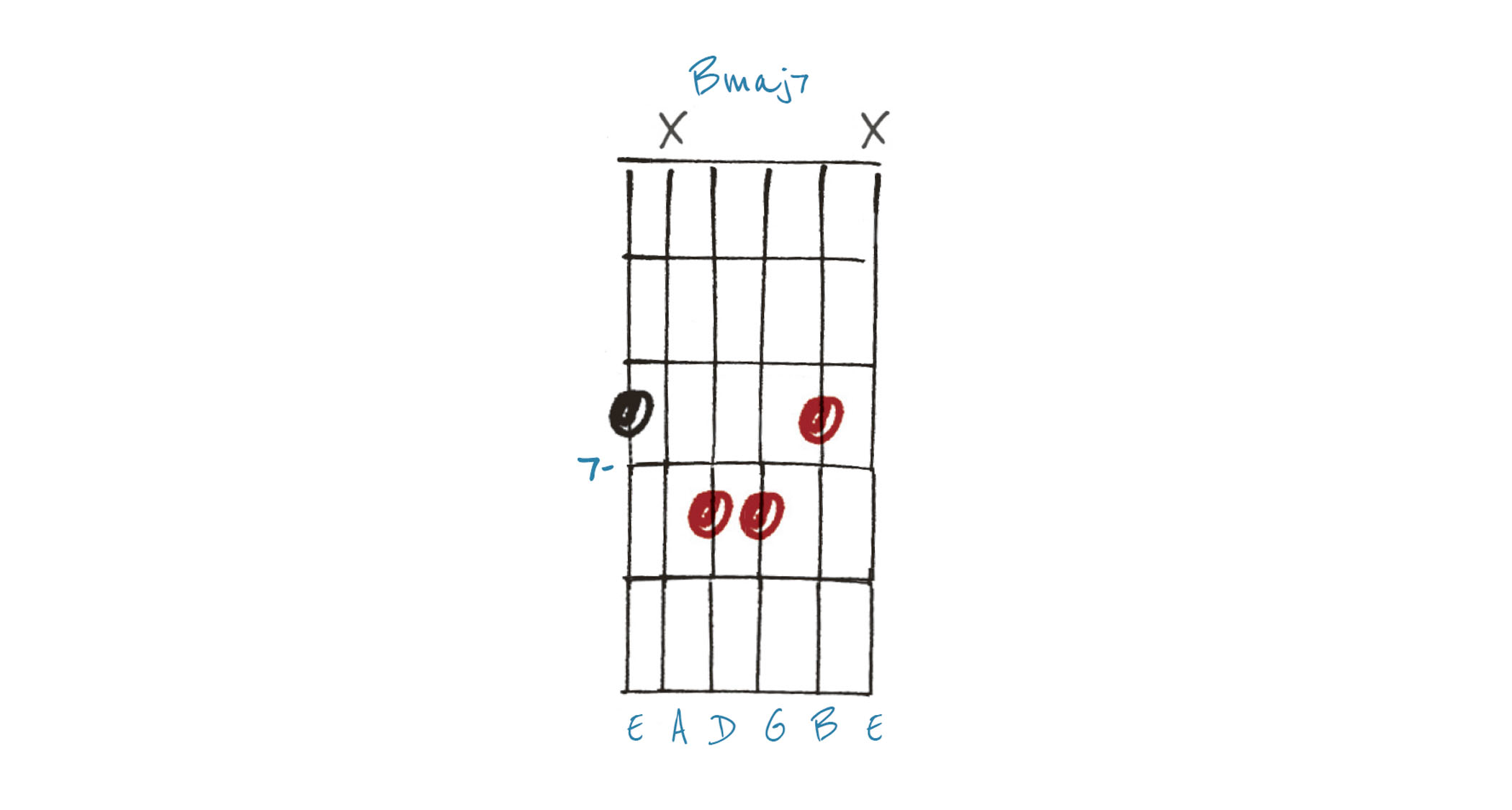
This version of Bmaj7 has a jazzy feel as the 5th (F#) is separated from the Root (B) by an octave.
This is common in jazz because it allows the other more delicate intervals to come to the fore.
In fact, the 5th is often omitted completely. Compare with Example 1 to hear how much more ‘rock ’n’ roll’ the Root and 5th (B-F#) sound at the bottom.
Example 4
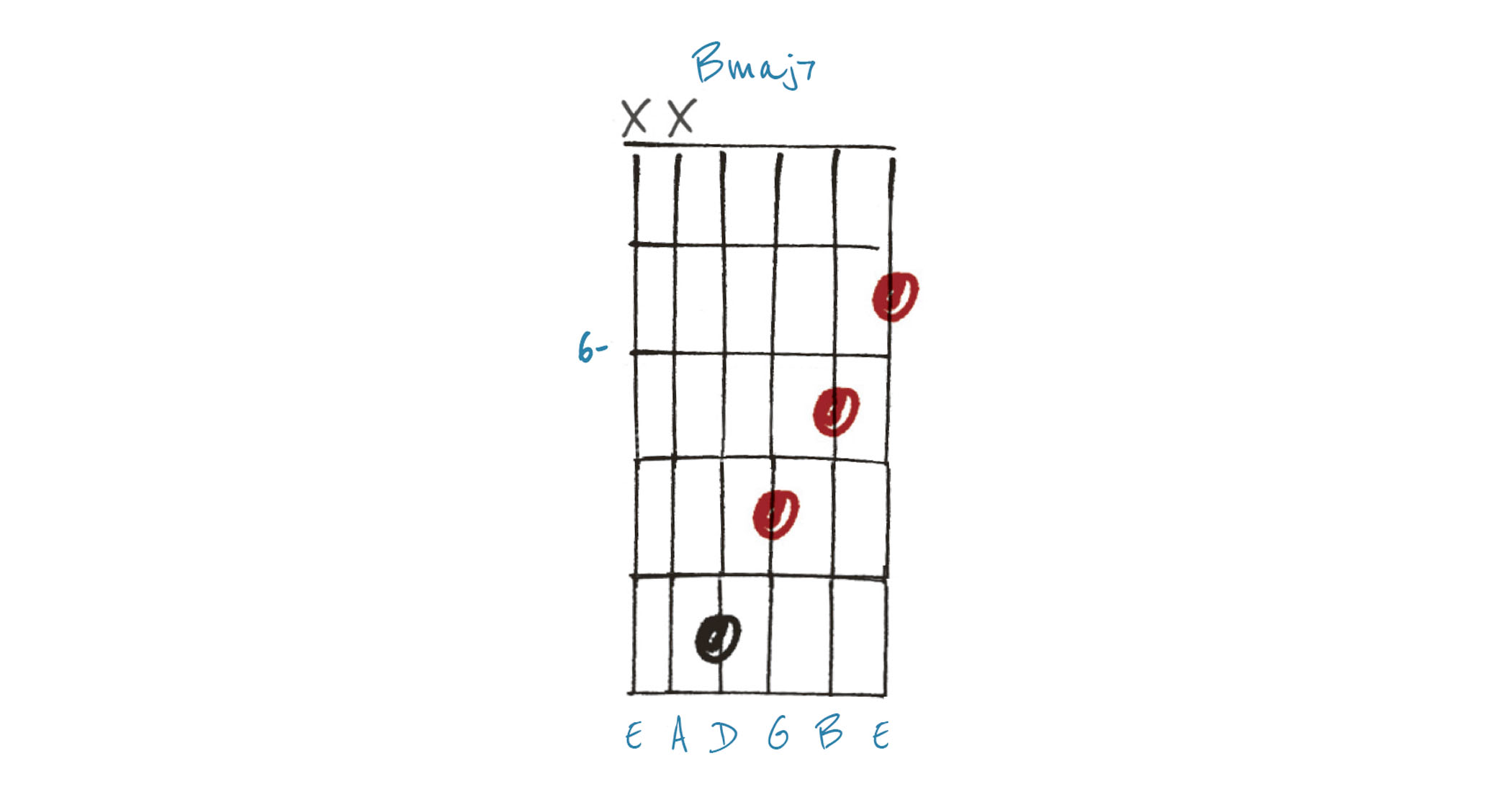
Played on the top four strings, this version of Bmaj7 is great for funk rhythm parts where you want to keep things light without too much low-end muddying things up.
Over a G# bass note, this voicing would also make a very nice G#min9 chord, which is the relative minor key.
Example 5
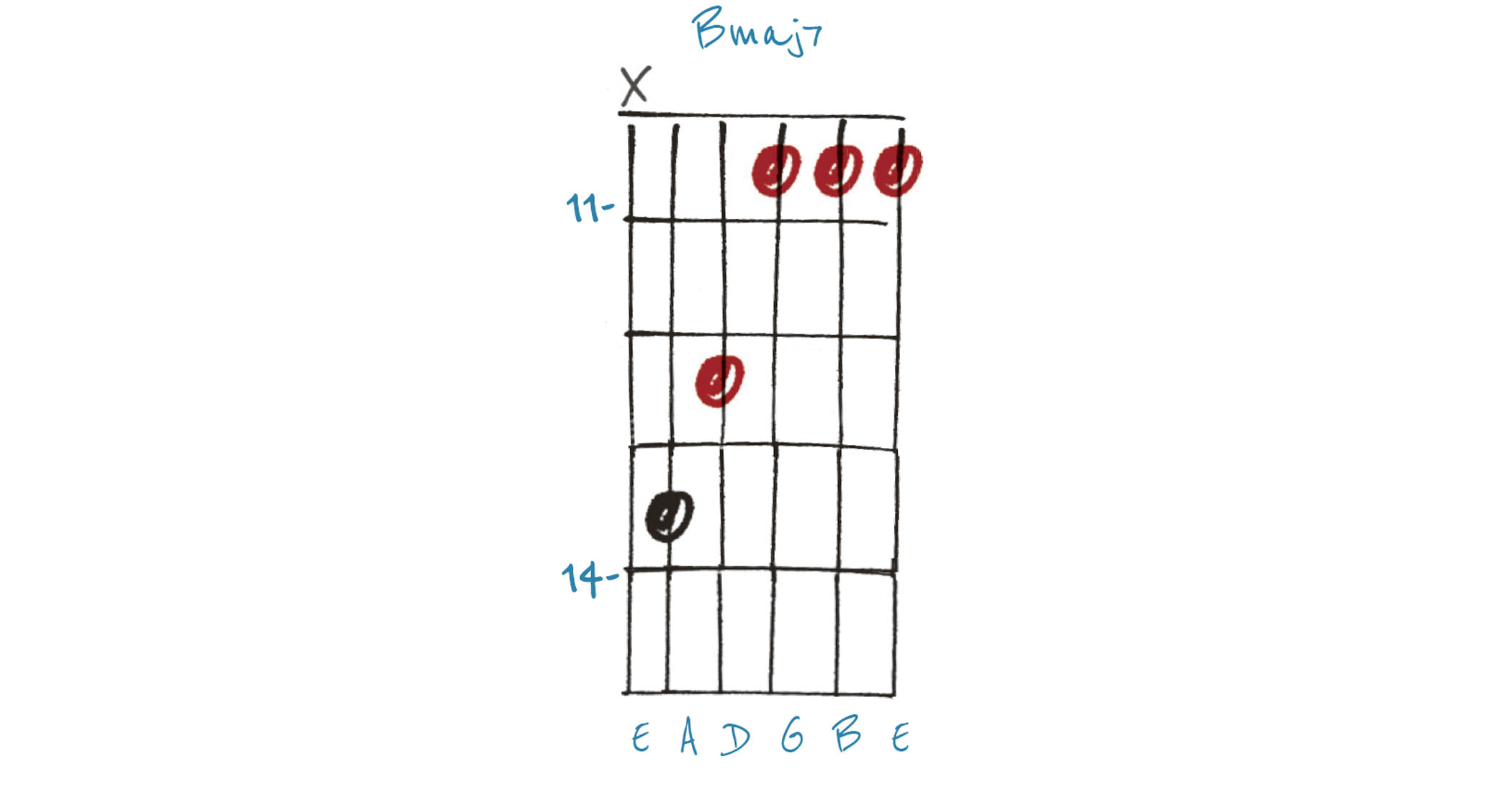
Using the CAGED Cmaj7 shape, here is yet another voicing of Bmaj7, with the root on the bottom.
You could almost view the first finger of your fretting hand as a temporary capo and move this shape to any key, though it does require a bit of stretch and strength in the lower registers.
- This article first appeared in Guitarist. Subscribe and save.
Get The Pick Newsletter
All the latest guitar news, interviews, lessons, reviews, deals and more, direct to your inbox!
As well as a longtime contributor to Guitarist and Guitar Techniques, Richard is Tony Hadley’s longstanding guitarist, and has worked with everyone from Roger Daltrey to Ronan Keating.
You must confirm your public display name before commenting
Please logout and then login again, you will then be prompted to enter your display name.

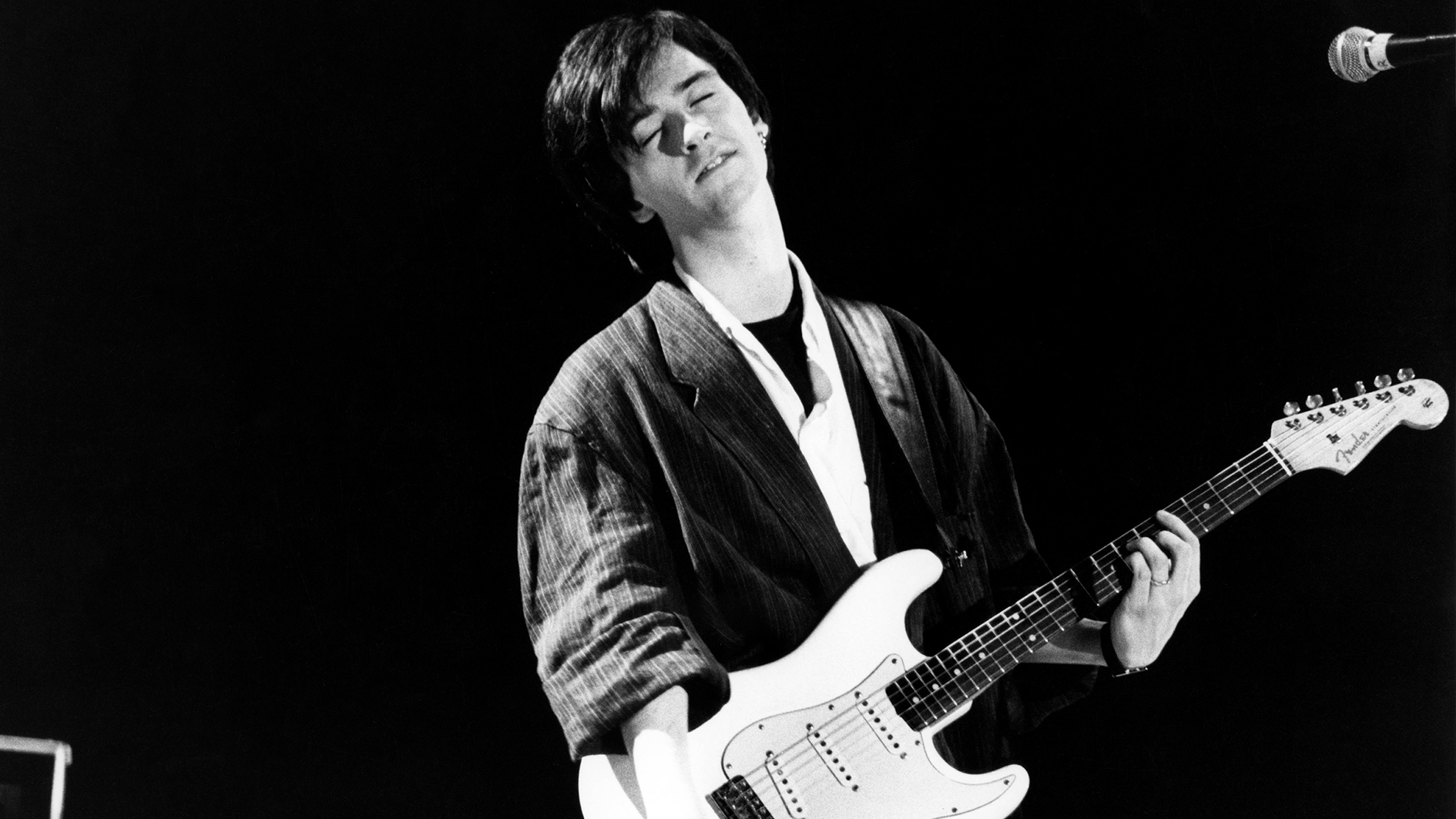



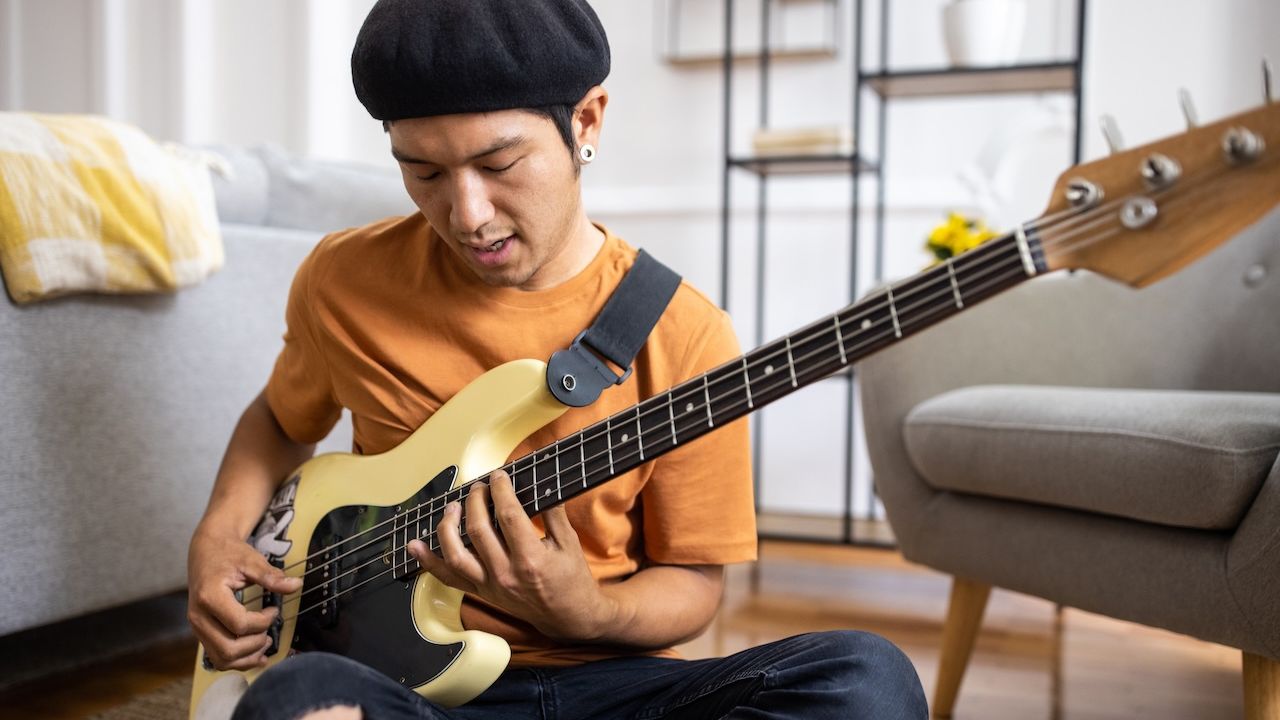


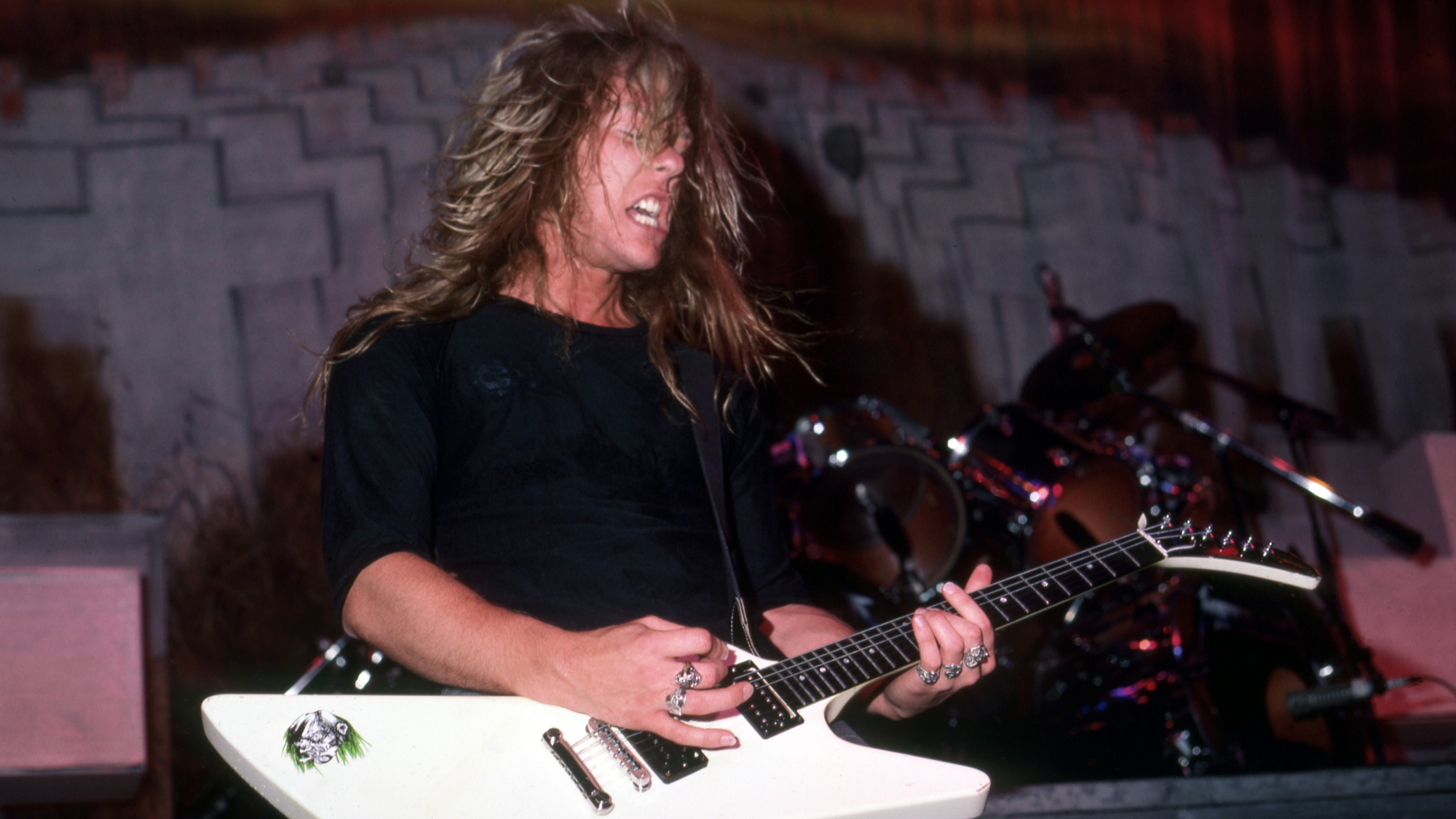
![Joe Bonamassa [left] wears a deep blue suit and polka-dotted shirt and plays his green refin Strat; the late Irish blues legend Rory Gallagher [right] screams and inflicts some punishment on his heavily worn number one Stratocaster.](https://cdn.mos.cms.futurecdn.net/cw28h7UBcTVfTLs7p7eiLe.jpg)

